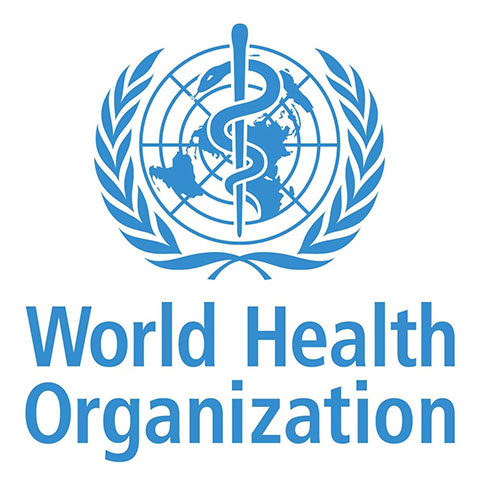
New WHO technical guidance: Interruption of transmission and elimination of leprosy disease
In a consultation event in Manila this month, World Health Organization released its new technical guidance Interruption of transmission and elimination of leprosy disease. This is the culmination of three years of work by a WHO task force which involved several ILEP member personnel, chaired by Dr Wim van Brakel from ILEP member NLR.
Publication of this new technical guidance is a significant moment for the leprosy world. It consists of three closely connected elements.
Interruption of transmission and elimination of leprosy disease
The main publication, Interruption of transmission and elimination of leprosy disease, is available here. It provides technical guidance on concepts, definitions, indicators, criteria, milestones and tools to assist leprosy programmes in their journey towards the goals of interruption of transmission and elimination of leprosy disease, and through the post-elimination period. It introduces the new Leprosy Elimination Framework (see below), a central feature in this new guidance. The emphasis is that although the elimination of leprosy is a long-term, continuous journey, clear milestones can be recognised on the way. Programme implementation can be assessed against benchmarks, guiding appropriate action to keep the programme on track. Importantly, the technical guidance covers all key aspects of leprosy programmes and services – not only those related to elimination efforts, but also those related to diagnosis and management of leprosy, leprosy-related disabilities, mental wellbeing, stigma and discrimination and inclusion and participation of persons affected by leprosy.
Leprosy Elimination Framework
The new Leprosy Elimination Framework, reproduced below, is at the core of the technical guidance. In a very straightforward way it sets out the phases of elimination, along with the milestones that demonstrate when a country or sub-national area progresses through the phases towards the eventual achievement of non-endemic status. The arrow at the bottom of the table shows the point at which a country reaches the stage of elimination of leprosy disease and uses the Leprosy Programme and Transmission Assessment (see below) to seek verification by WHO that elimination has been achieved.

Leprosy Elimination Monitoring Tool
Leprosy Elimination Monitoring Tool is available here. The LEMT is based on the phases of elimination described in the Leprosy Elimination Framework. Using a country’s long term leprosy data, it provides a bottom-up process to build evidence for the interruption of transmission and elimination of leprosy disease. This is valuable not only for countries that are low endemic overall, but also for countries that have lower-endemic sub-national sectors.
The LEMT is accompanied by an Excel-based tool that countries can use to develop colour-coded tables that show progress towards elimination over time, and a colour-coded map that does the same. There are clear instructions for its use based on actual country data. The Excel tool is available but initial piloting suggests that programme staff or data analysts will benefit from training in its use before a full roll-out.
Leprosy Programme and Transmission Assessment
Leprosy Programme and Transmission Assessment is available here. The LPTA is an activity to be carried out by internal teams at two points in the journey described in the Leprosy Elimination Framework. There are detailed criteria and templates for each of these.
The first point at which an LPTA may be undertaken is when a subnational area reaches the milestone for interruption of transmission (ie zero autochthonous child cases for five consecutive years). Carrying out an LPTA at this point involves a workshop representing relevant leprosy services and facilities and a wider range of stakeholders. It helps to ensure that the focus is not solely on transmission but also on the many, broader aspects of well-functioning leprosy programme.
The second point at which an LPTA is needed is at national level at the end of Phase 2 of the Leprosy Elimination Framework. This is the moment when a country wants WHO to verify that elimination of leprosy disease has been achieved. The LPTA is carried out to document that all relevant programme criteria have been met and to examine trends of epidemiological indicators. The work involved is comprehensive. It includes review and validation of epidemiological data, assessment of health facilities that provide leprosy services, and verification of the programme criteria through observation during a field visit. The collected evidence is compiled in a Leprosy Elimination Dossier to be submitted to WHO when the country reaches the milestone for elimination of disease in the country as whole.
Countries that have not detected any new leprosy cases in the past three years or more can use the LPTA at national level prior to or as part of the verification process. Countries that have had no new cases detected for more than 10 years are likely to be among the first to apply for verification.
Implications for ILEP
The Foreword to the WHO Global Leprosy Strategy 2021-2030 points out that the strategy is targeted not only at high-endemic countries but also at low-endemic countries that are close to achieving zero transmission. ILEP’s members usually work in high endemic areas, but we are already hearing calls from WHO regional teams and from Ministries of Health to support low-endemic countries as they seek to put this technical guidance into practice.
This is likely to include calls for ILEP to:
- Expand its focus and increase the number of countries in which it is working.
- Support countries to implement the LEMT. This is likely to include focus on data management and mapping, as well as on the technical aspects of using the tool.
- Support countries to implement the LPTA, both at the end of Phase 1 of the Framework and at the end of Phase 2, to support external verification of elimination of leprosy disease.
- Assist countries in the compilation of the Leprosy Elimination Dossier following completion of the LPTA assessments.